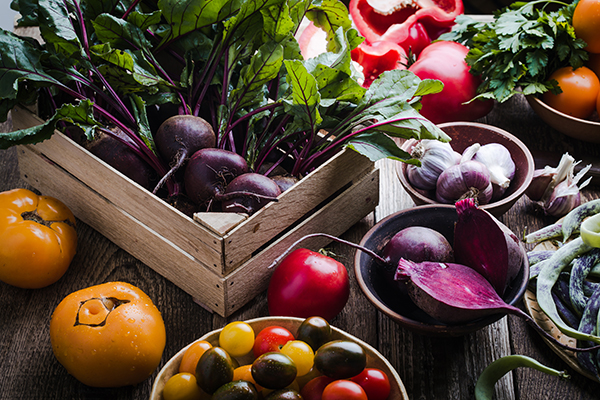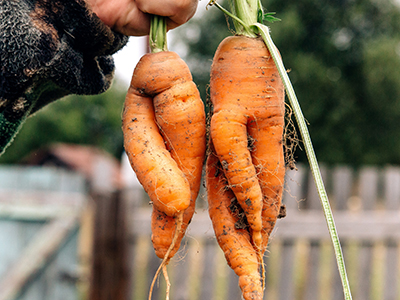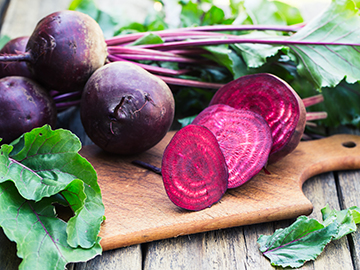What’s new in food?
The food space is evolving more rapidly than ever, and innovation in sustainable food is very much at the heart of these changes. We see that our consumers are becoming more conscious about their dietary choices and how these impact the planet, and sustainability factors are increasingly influencing the food they choose to buy and eat.
Some of the sustainable food trends we see playing a big role in 2023 are:
Growing popularity of plant-based food
 The term plant-based is now well-known worldwide, and the trend is embraced throughout different age groups and geographies. Many have been inspired to try a plant-based lifestyle or to simply reduce the amount of animal products they consume thanks to the wide range of new plant-based and meat substitute food products now available. In fact, 39 percent of consumers globally indicate they have reduced their consumption of animal protein or have begun eating a flexitarian diet (Kantar, 2022).
The term plant-based is now well-known worldwide, and the trend is embraced throughout different age groups and geographies. Many have been inspired to try a plant-based lifestyle or to simply reduce the amount of animal products they consume thanks to the wide range of new plant-based and meat substitute food products now available. In fact, 39 percent of consumers globally indicate they have reduced their consumption of animal protein or have begun eating a flexitarian diet (Kantar, 2022).
Our in-depth landscape analysis shows that most often the primary driver for eating a plant-based diet is actually health, followed closely by environmental concerns. As a result, we expect demand for plant-based options in 2023 to be focused on less processed and more nutrient-dense plant-based meals made from fresh fruit and vegetables, legumes, nuts and grains.
Our plant-based menu development will continue to focus on foods that have been processed or refined as little as possible and are free from additives and other artificial substances. This approach will add to the many authentic, plant-based recipes we already feature on our menus to meet both consumer demand and our wider sustainability and net zero goals.
Reducing food waste
 According to United Nations Environment Programme, an estimated 17 percent of global food production is wasted, representing approximately 8 to 10 percent of global carbon emissions. It’s an issue which is top-of-mind both for our consumers and the food industry at large.
According to United Nations Environment Programme, an estimated 17 percent of global food production is wasted, representing approximately 8 to 10 percent of global carbon emissions. It’s an issue which is top-of-mind both for our consumers and the food industry at large.
We have a global WasteWatch program, as well as various local initiatives such as Wasteful to Tasteful, which allows us to recover wonky fruit and veg that would otherwise be sent to landfill. In addition to these longstanding initiatives, we’ve also recently developed a new program, Waste in Mind, for our managers and culinary teams that helps to avoid food waste in our kitchens. The program enhances the way our teams purchase, prep, cook and dispose of the food we use on-site, all while supporting creativity and innovation in our kitchens and design to evolve as we optimize our waste-reduction efforts and work toward our goal of zero waste.
The rise of ‘Blue Food’
 A sustainable food system is one that ensures there’s enough nutritious food to feed our growing population. Blue food is one way of doing that. The term blue food refers to aquatic animals, plants and algae that are harvested or grown in fresh water or oceans.
A sustainable food system is one that ensures there’s enough nutritious food to feed our growing population. Blue food is one way of doing that. The term blue food refers to aquatic animals, plants and algae that are harvested or grown in fresh water or oceans.
In 2023 our chefs will be developing new dishes that feature several categories of aquatic bivalves (such as mussels and clams), small pelagic fish (like anchovies and sardines) and plants and algae (such as seaweed)—some of the most sustainable forms of protein we can eat. We believe that there’s potential to shed light on these nutrient powerhouses by featuring them on our menus.
As a food services company, we are always exploring new ways to support a sustainable food system, pursuing opportunities and mitigating challenges in our industry in the most environmentally friendly way possible. We will continue to build on this in 2023, contributing to positive change with every meal that’s served and enjoyed.



